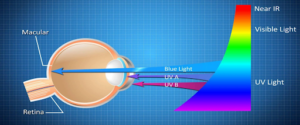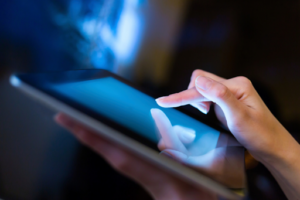What Is Low Blue Light Technology And Do You Need It?

What Is Low Blue Light Technology And Do You Need It? The explanation is that Low Blue Light Technology reduces a display’s output of harmful low-blue photons to reduce eye strain. In order to minimize eye fatigue, Low Blue Light Technology lowers the output of damaging low-blue lights on the display. This is why we need it. Your LCD display emits less blue light, thanks to Low Blue Light Technology. For the greatest eye care, select a Blue Light Protection from levels 1 through 4. Please confirm the right specification from the user manual because each device may have a distinct button or OSD menu configuration.
Why Do We Need to Have Low Blue Light Technology?
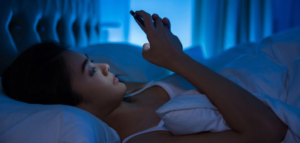
We should be worried about our ocular health if we spend a significant amount of time seated in front of a computer monitor, whether for business or for pleasure (or both!).
Without taking pauses, staring at a screen for lengthy periods of time can wear your eyes out, give people headaches, and eventually harm their eyesight.
Fortunately, most contemporary displays include features to avoid this, like Low Blue Light (LBL) technology.
Low Blue Light Technology: What Is It?
In essence, screens using LBL technology block the damaging blue lights that might fatigue certain people’s eyes.
Users frequently report having problems taking a nap after being exposed to dim blue light just before bed. In essence, a low blue light filter may be found on practically all current displays. Look for a function named “Low Blue Light” or anything similar in the OSD (On-Screen Monitor) menu of the display to discover it. Certain image settings, including Reading Mode, Eye Protection, Text Reading, Paper, and similar ones, on some displays, will automatically change the low blue light filter.
The brightness of the screen may or may not vary when the LBL mode or preset is enabled, depending on the monitor. If it doesn’t, remember that choosing the optimum brightness level is just as important for a good viewing experience. In regions with poor lighting, you should lower the brightness while raising it in areas with good lighting. Finally, if your display is obsolete and does not include Low Blue Light Technology, you may manually lower the discharge of the blue hue within the monitor’s color temperature settings.
Additional Considerations Regarding Low Blue Light Technology
- Make sure the monitor you’re buying has both a flicker-free backlight and a low blue light setting.
- Direct current (DC) is used by flicker-free displays to lower their backlights. PWM (Pulse-Width Modulation) displays that control brightness creates screen flicker, which can give individuals who are sensitive to it migraines.
- Additionally, a monitor’s screen should be properly anti-glare coated to reduce reflections.
- Naturally, it’s still advised to take breaks even with all of these safeguards; even a little 5-minute rest after each hour or so is highly helpful.
- Windows-enhanced Night Light feature can reduce the use of blue lights.
- Consider purchasing a set of blue light-blocking eyeglasses or a blue light screen filter that you might connect to your monitor if your older display lacks any of the capabilities listed so far.
Effects of Blue Light
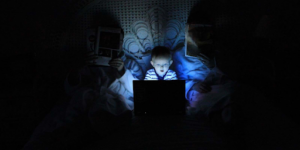
Although blue light does have the biggest energy content—as we well know—is it really so harmful? Where can one even find it? These blue light insights can help you.
It’s Omnipresent.
There are several devices that emit blue light, but the most popular ones are computer and phone displays. The majority of people are exposed to displays more often than they are to the sun, despite the fact that blue light emanating from all of these screens is not as intense as that of the blue radiation emitted by the sun. Amazingly, some individuals avoid spending any time outdoors in the sun because they are dependent on their phones or laptops. People spend a lot of time looking at screens, and almost invariably the outcome is blue light from of the sun.
It travels through the eyes
Many individuals are unaware of the ease with which blue light may travel right past the eyes. To be more precise, it extends all the way directly to the retina after passing through the cornea. Contrary to UV rays, which human eyes can easily block out, everyone must contend with blue light unless they use blue light screen protection.
An Excessive Amount of Exposure Might Harm the Eyes
You’ve probably heard that excessive screen time can harm your eyes. Screens emit blue light, so if you spend more than four hours a day staring at them, you run the risk of getting macular degeneration when you become older.
Eye Fatigue is a Result
It goes without saying that blue light can strain the eyes. Eye fatigue will always be there before you see your eyes getting older. Eye strain can cause warm eyes, weary eyes, and even headaches. More severe symptoms include things like migraine headaches and actual soreness around the eyes.
Is Low Blue Light Technology Helpful?
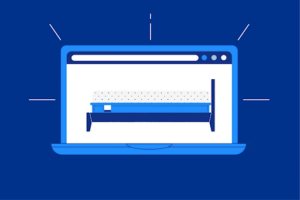
In the end, the most important factor is whether or not LBL technology is sufficient to maintain your eyes’ health. There isn’t a straightforward solution to this because a number of factors, like how much rest you receive, the lighting at the workplace, how you take look after your eyes, your heredity, etc., impact your overall optical health.
However, if you use monitors at night, LBL is a great way to further ensure the safety of your eyes. When you study or surf at night, LBL technology, in particular, can reduce the quantity of light that convinces your brain it’s daylight. As a result, you’ll have an easier time falling asleep.
Conclusion
So what Is Low Blue Light Technology And Do You Need It? Well, now you’ve known. However, we advise you to experiment with various LBL settings while studying, working, or using the display just before going to bed. At first, it could seem strange or useless, but after some time, you’ll realize that it makes your eyes feel better at ease.
